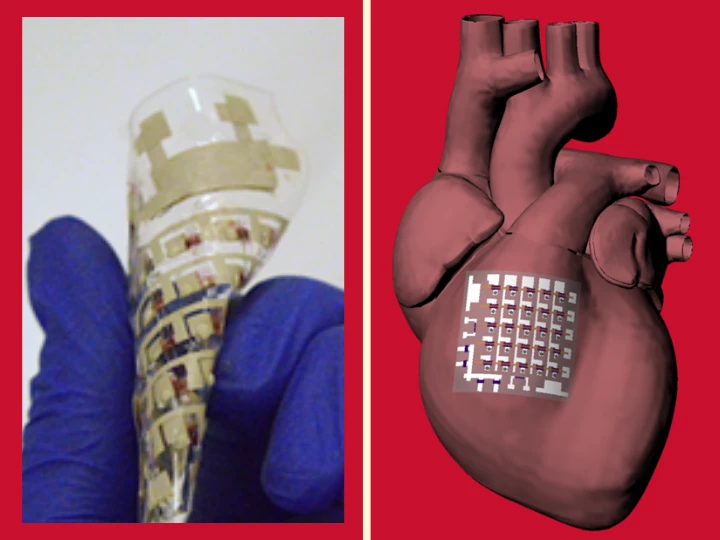Over the years we've looked at many implantable patches that can be used to treat damaged hearts, but a new example developed at the University of Houston is claimed to take these into new territory. Described as the first of its kind, the rubbery patch is pliable enough to be applied to a beating heart, but contains an impressive suite of sensing capabilities thanks to the flexible electronics onboard.
The mechanical engineers behind the patch set out to solve some of the limitations of previous implantable cardiac devices, which they say are often too rigid to move with the heart as it beats, which can strain the tissue. Softer materials can solve this problem, but typically don’t offer the same functionality when it comes to gathering data.

By building on their previous work in which flexible electronics were incorporated into robotic hands and stretchable skins, the researchers developed a heart patch that matched the mechanical softness of the heart tissue. Squeezed into the patch were sensors to gather data on electrophysiological activity, strain, temperature and heartbeat, all from multiple locations on the organ at the same time.
This was successfully tested on pig hearts, with the team also demonstrating how the device can power itself by harvesting energy from the beating organ. The researchers were also able to show how the patch could be used to treat irregular heartbeats, through electrical pacing or thermal ablation.
“For people who have heart arrhythmia or a heart attack, you need to quickly identify the problem,” says co-author Cunjiang Yu. “This device can do that.”
The research was published in the journal Nature Electronics.
Source: University of Houston




